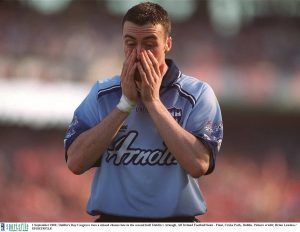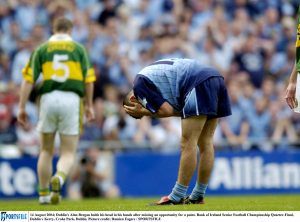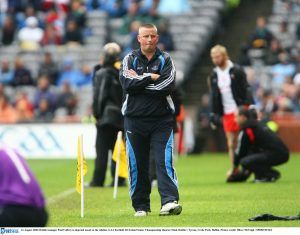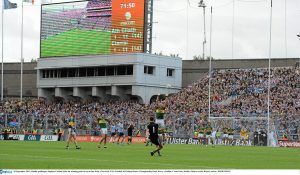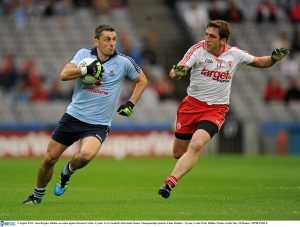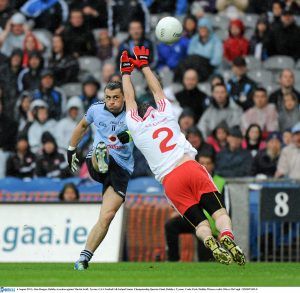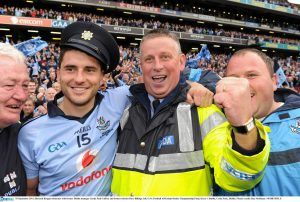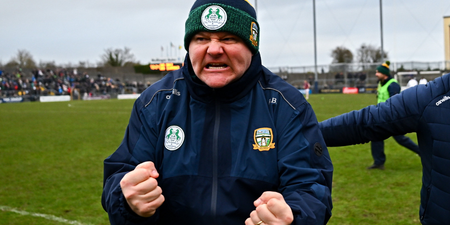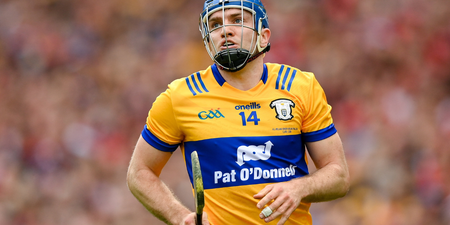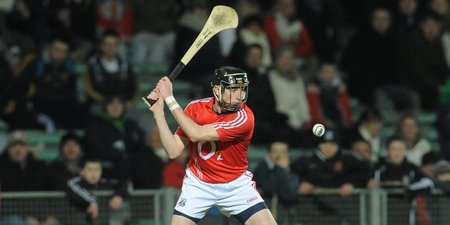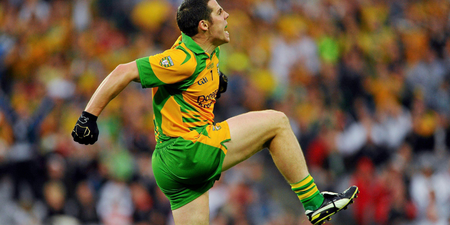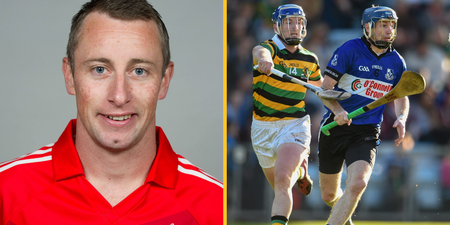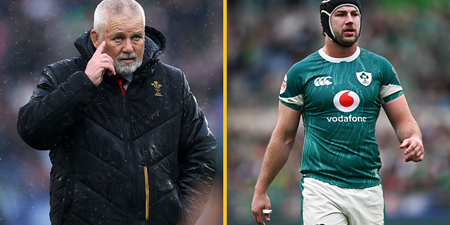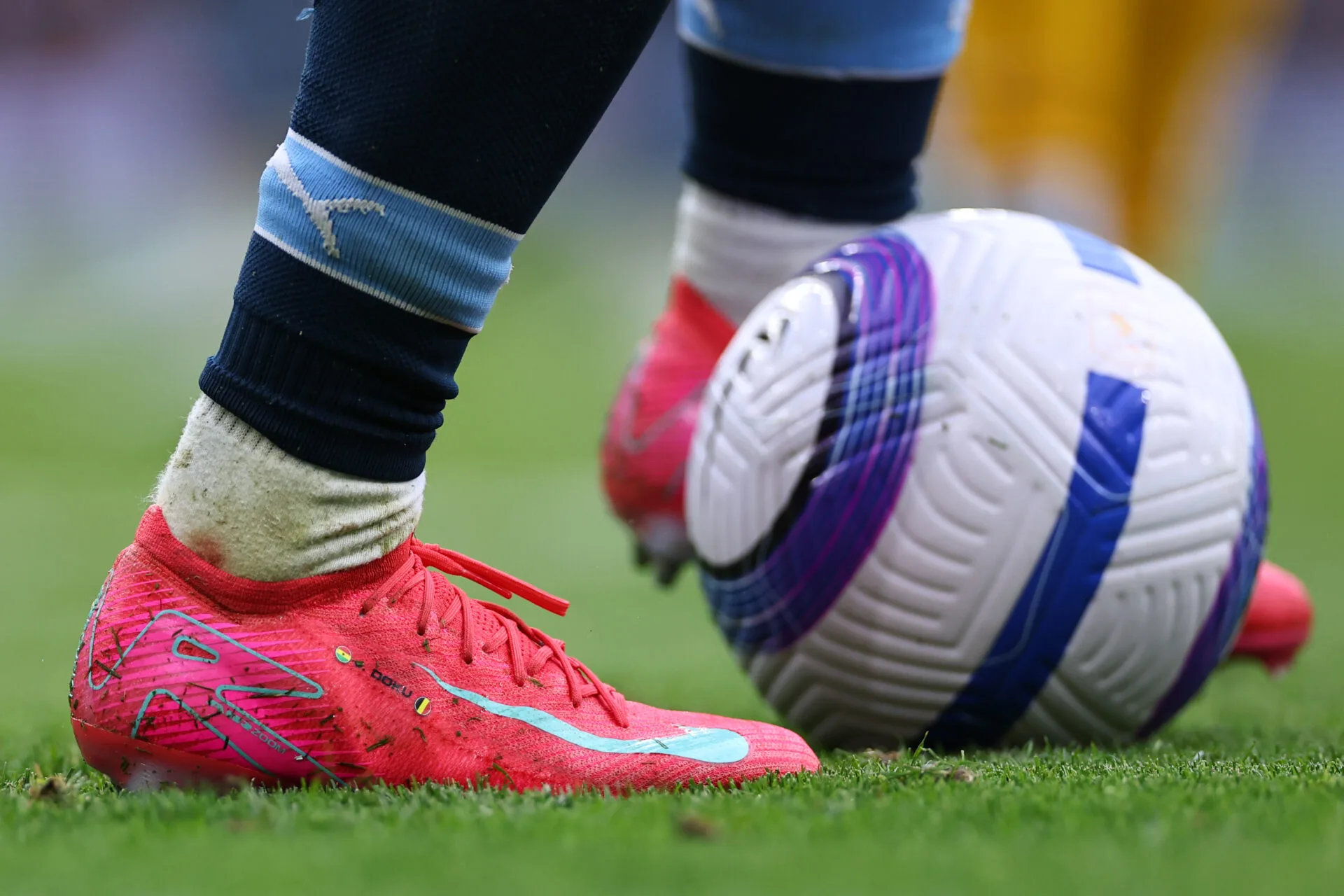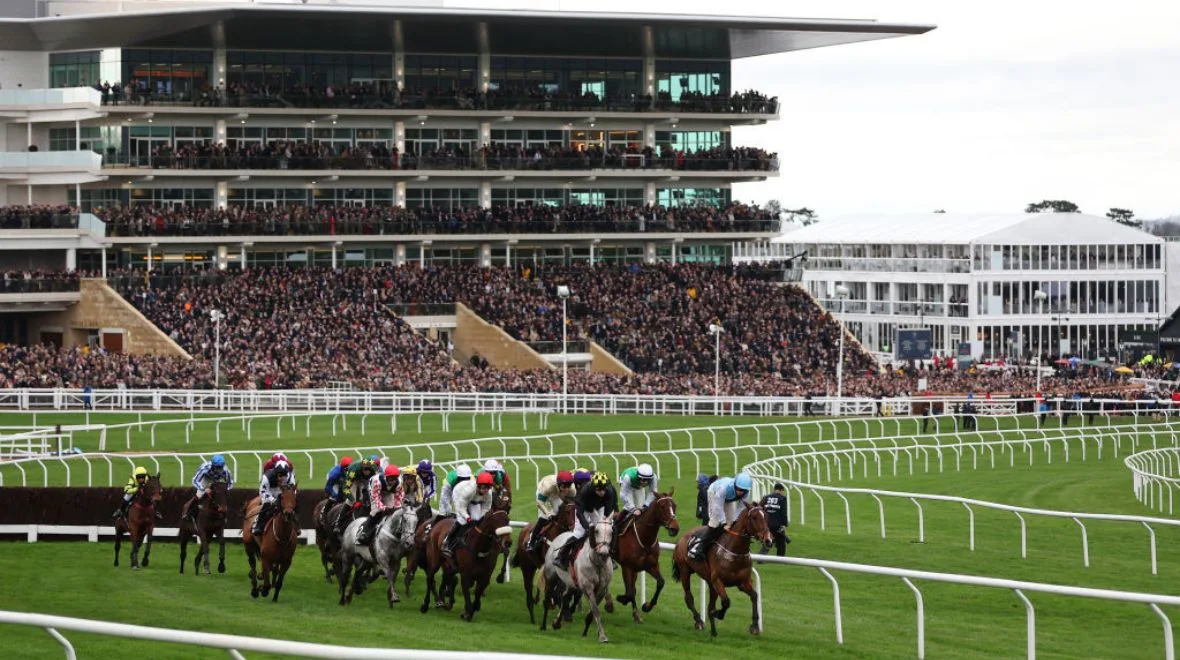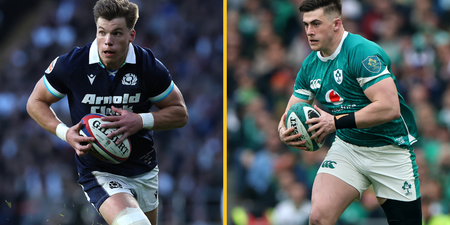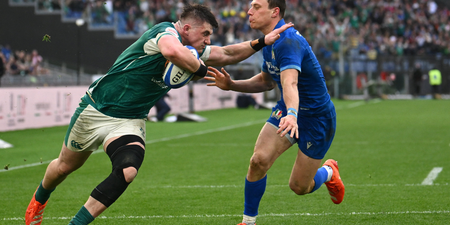What caused the culture change in Dublin that saw them go from perennial also-rans to history makers? SportsJOE spoke to a man at the coalface of the revolution: Ray Boyne, Performance Analyst with Dublin football from 2003-2017.
The majority of children starting primary school this year were not alive last time Dublin lost a Championship match. It’s hard to think of Dublin football as being anything other than a dominating juggernaut devouring all before them with joyless ferocity.
While it cannot be argued that unfair funding disparities between Dublin and every other county in the country have created a chasm between the All-Ireland Champions and the chasing pack, there is more to this story than just money.
There was a time when Dublin not only struggled, they simply didn’t matter. In a Land Before Jim, Dublin were never guaranteed Leinster. As a result, before the backdoor came in, they weren’t even guaranteed featuring in the All-Ireland series. Even when the second chance system came into play, Dublin still struggled. As recently as 2003, they didn’t make the Leinster decider and were dumped out of the Qualifiers.
In the decade between winning the All-Ireland in 1995 and taking the Leinster crown in 2005, Dublin only managed one other provincial title. They only made it into the All-Ireland proper on three occasions. Something was rotten in the state of Dublin.
You could argue they were unlucky. In eight of their campaigns in the noughties, the Dubs were dumped out of the Championship by the eventual winners of Sam Maguire. You could also argue that when games went into the melting pot, they simply weren’t good enough.
There are certain moments in that period that send shivers down spines in the capital. Ray Cosgrove striking the post against Armagh in 2002. The peroxide streak of Owen Mulligan almost taking the net off the Canal End in ‘08. Ciarán MacDonald being possessed by Jesus himself in the semi-final of ‘06. Gooch slotting past Cluxton before most had taken their seats in ‘09. Donncha O’Connor slotting a free as the clock went red to put Cork ahead for the first time in the entire game in 2010.
Tough, dark days. Depending where you’re from, of course.
Pillar Caffrey and Re-taking Leinster
The appointment of Paul Caffrey came after an uninspiring period under Tommy Lyons, a solitary Leinster title the only glimmer of light for the waning capital. It was a crucial moment for the Dublin football set-up;
Quite simply, 2005 was a turning point. Dublin grabbed a stranglehold of their province that has seen them hold the Delaney Cup for 14 of the last 15 winters.
“I would say, and I would always have said, that Paul Caffrey took the Dublin job maybe when there wasn’t that many people wanted to take it. It was coming off the back of a really tough ten years for Dublin within Leinster. Paul Caffrey, in my opinion, doesn’t get the credit that he deserves for steadying the ship and making Dublin a force again in Leinster and capturing it. So, he won four Leinster titles and got us back to there.”
But success still eluded Dublin on the biggest stage. While Kerry and Tyrone swapped Sam for seven successive years, they gleefully dispatched of Dublin en route in five of those. They were veritable hammerings in most cases.
One of those came at the hands of Owen Mulligan and co, and a 12 point evisceration saw Pillar exit stage left. Good work done, but still not good enough.
Gilroy, Culture and Humility
In came Pat Gilroy in October of 2008, and Boyne credits Pat Gilroy with a huge shift in the Dublin set-up;
“It was a sea change, it really was. There’s two big things, from Pat’s point of view; he professionalised the whole environment but he also changed the culture massively.”
From the “professionalised” point of view, Gilroy looked not just to catch Dublin up with the standard-bearers, but to set them apart at the top. That started with finding a dedicated base for the Dublin side, who had been nomads in the capital for the years before that;
“When Pat came in, he basically took us from where we were training in the old Artane school in St. David’s. He lifted us up and brought the whole team up to DCU. With the help of Niall Moyna who’s Professor in Sports Science in DCU, he began to really, really professionalise the set-up. He actually built a facility within DCU; dressing rooms, an area for video review, an area for players to eat and change. To this day, that’s there. Which is a great credit to him. It opened the players up to a completely different level of support. Niall, through his involvement within DCU, was bringing in some of the greatest sport scientists, a lot of international athletes who were doing theses and working within DCU were coming to the training sessions and working on sprinting techniques, running techniques.”
Culture-wise, Gilroy simply wanted to dispel a slow rot that had crept into the Dublin set-up;
“Pat basically went back to very much the old traditional culture. He was very quick to explain and very quick to dispel any levels of entitlement that were anywhere. This was something bigger than us, this was the Dublin team. A lot of the clichés that some people use or you think about the All-Blacks and how it is; standing on the shoulders of giants and all the people that came before you. Pat reinforced that, reinforced that within the group.”
He brought a humility to Dublin, a new-found respect for the county they were representing;
“I remember in the run-up to Christmas just after he’d taken on the job, he wanted the players to see Dublin in a different light. So, he joined forces with the Father McVerry Trust and the Simon Community and he got the players to attend various events. But one that sticks out in my mind is that everyone, management and players, we were all asked to do a sleep-out, 24 hours overnight, under the canopy of Arnotts. It was elder statesmen and geniuses like Micky Whelan in a sleeping bag beside Pat Gilroy and all of the players, and I think that gave people an appreciation of who they were playing for, what it was about. It was bigger, it was something that was unique that was being bestowed on the players as individuals to come together and to deliver for Dublin.”
Dublin were still off the pace, and the shock 1-07 to 1-24 defeat at the hands of Kerry in 2009 showed that. The late comeback from Cork in 2010 provided a different type of heartbreak, as Dublin were never behind from the first minute until the 70th, and still lost another semi-final. Ironically, it was the closest that side had gotten to Sam Maguire, and yet it never felt as far away as it did on that day.
In 2011, they reached the summit.
Burying the Ghosts
It cannot be underestimated what that side had to overcome to win in 2011. They had to beat Tyrone in the Quarter Finals, and while the Ulster side were raging against the dying of the light, they were still a massive thorn in that Dublin side in the preceding years. They then had to achieve something no one on the panel had ever done: win an All-Ireland Semi-Final. They also had to do that while facing that infamous Donegal blanket. If that wasn’t enough, they found themselves 4 points down with 8 to play in the Final against the side that had put them to the sword just 2 years previous.
The mental challenges that Dublin had to overcome in the All-Ireland series would have been insurmountable just a couple of years previously.
It was fitting that Dublin would see off Kerry in the final in 2011. Hill 16 die-hards couldn’t have written the script better themselves, as future captain and ‘keeper-turned-quarterback Cluxton pointed in the final moments, into the Hill, to banish the old enemy and take Sam to the capital for the first time in 16 years.
However, while the iconic images of that season are of that final against the Kingdom, a different game defines that crucial year for the players and management;
“Tyrone were the nemesis of that particular team, and if you think about that Mulligan goal, and you think about the drawn game, about the replay and you think about the characters that were in that Tyrone team… The Tyrone piece was such a major factor for that Dublin side” – Ray Boyne
“And like for me, the All-Ireland final in 2011 is obviously spoken about a lot, spoken about a lot, the Donegal game was obviously spoken about a lot for obvious reasons. But there was never much talk about our performance against Tyrone in the Quarter Final, and for me looking back… I’d actually never watched the full game back myself, maybe bar the week after when we were doing the analysis on it. But for me, looking back, that was certainly the best team performance I was ever involved in in a Dublin shirt.” – Alan Brogan
“Because that was a big result for us, beating Tyrone. They were a team we would have benchmarked ourselves against. They were a phenomenal team, phenomenally successful team, so we were kind of gunning after them. So yeah, they gave us a bad beating in ‘08, Kerry had given us one in ‘09, and then we went into then, that was a big win, a big monkey off our back.” – Paul Flynn
Jim Gavin
But the era of expected Dublin dominance was put on hold when Mayo dumped the champions out at the semi-final stage in 2012. It was Gilroy’s turn to leave the helm, and he was replaced by the then u21 manager and Clondalkin Round Towers man Jim Gavin.
“Jim coming to the Senior team when he did, I had the great privilege of working with him through his u21 years and we won two All-Irelands. So he had a lot of those players who he developed, and some of the guys who I would describe as his lieutenants and his leaders, the likes of Jonny Cooper, coming in.
“He pores over the detail, absolutely pores over the detail. I would say that, probably in my lifetime, he is the hardest working person I’ve ever had the unique privilege to be around.”
What Jim Gavin has brought to the side since has been covered beyond any team in the history of the sport. Minute details are pored over, countless articles constructed from the scraps and soundbites made available, debates raging over where this Dublin team belongs in the pantheon of great footballing sides.
While Gavin is certainly the architect of what could become the fabled Five-in-a-Row, the foundations were laid by other managers at a time when Dublin football was in the doldrums.
"He was very quick to explain and very quick to dispel any levels of entitlement that were anywhere. This was something bigger than us, this was the Dublin team."
As @DubGAAOfficial aim for history, we spoke to @AnalysisGAA about the sea change in the team, led by Pat Gilroy. pic.twitter.com/9K5HbIawqA
— SportsJOE (@SportsJOEdotie) August 30, 2019

